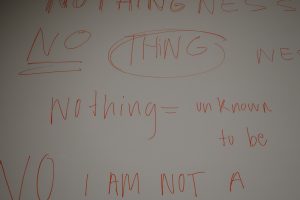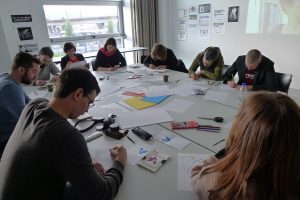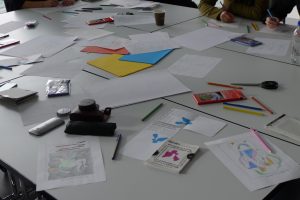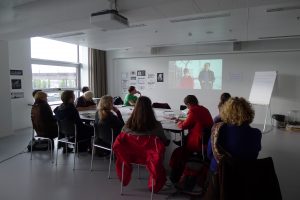
BECAUSE IT’S 2016! CHALLENGING INCLUSION AND EXCLUSION AT SWISS ART SCHOOLS
«A year ago, when asked “why it is so important to have a gender balanced cabinet,” the newly elected Prime Minister of Canada Justin Trudeau replied, “because it’s 2015!” It is fitting then, in 2016, to renew a collective commitment. Through our research and collaborations in Art.School.Differences we question social inequality in art schools and examine how exclusion interweaves with gender, the body, class, diversity, and internationality, as well as interrogate the structural implications this has on perceptions of the ‘ideal art student.’ It is our goal to understand processes of inclusion and exclusion at work in higher art education in order to challenge, counter, and eventually overturn them. By striving for more equality, plurality, and heterogeneity among the institutions’ students, staff, and curricula we would like to encourage Swiss art schools to become globally inclusive in 2016.»
This was the introductory text to final symposium Art.School.Differences held on 11/12. November 2016. The Institute for Art Education (IAE) at the Zurich University of the Arts (ZHdK) held the project lead in partnership with HEAD – Genève, Haute école d’art et de design and the Haute école de musique Genève – Neuchâtel (HEM). Drafted in majority by Catrin Seefranz and Carmen Mörsch, the research design focused on three levels of activity in Art.School.Differences. The first level was an empirical investigation of how inclusivity and exclusivity worked at all stages of the ‘student lifecycle’ with special emphasis on the admission process. The second level involved participatory research by seven teams of co-researchers from the three partner-schools and used educational debates on core themes and theories for questioning social inequality. The third level comprised an active dialogue within and without the institutions about the project’s objective throughout the duration of the investigation. The process was thus a critical endeavour from within the institution.
The research project coming to a close, we encouraged further research, initiatives, and interventions to challenge inclusion and exclusion in higher (art) education. «Because it’s 2016!»
FOR THE FULL PROGRAMME REFER TO THE PDF front AND back OF OUR INVITATION-BOOKLET!
See also our Flyer and Facebook
PLEASE CHECK OUT OUR CONFERENCE REPORTS!
I’m here and I’m black but I’m not here to be black: Conference report by Quentin Delval (in English)
Disability inclusion: Conference report by Nina Mühlemann (in English)
Art.School.Differences und die aesthetische Urteilskraft: Conference report by Karin Hostettler (in German)
PLEASE CHECK OUT THE AUDIO-RECORDING OF OUR KEYNOTES!
Please note that the recordings are in mp3 files and that certain browsers do not support their listening. Firefox or Internet Explorer work perfectly.
Philippe Saner: Social structure of the field
Pauline Vessely: Typology of candidates
Sophie Vögele: Fields of tension inherent to the admissions’ process
Carmen Mörsch: Co-research process and Participatory Action Research
Rubén Gaztambide-Fernández: Creation, Participation, and the Political Life of Cultural Production
In this talk, Gaztambide-Fernández draws from his research on the experiences of secondary students in public arts schools as well as his participatory action research with young immigrants and Indigenous students in Toronto public schools in order to offer examples of what it means to approach arts education from a cultural production paradigm. Building on his critique of the „rhetoric of effect“ in arts education, Gaztambide-Fernández elaborates on the notion of cultural production as a framework for thoughtful arts education and advocacy. Rather than seeing issues of equity, access, and social justice as outcomes or as problems to be solved, his framework takes these issues as points of departure where „difference“ and the „difference that difference makes“ become starting points for creative symbolic work. The presentation elaborates on the notion that creation and participation are intimately linked, whether implicitly or explicitly, and that only an understanding of this link can yield a rationale for the centrality of cultural production in education and for the pursuit of social justice goals.
Nana Adusei-Poku: Everyone Has to Learn Everything!
“White privilege is your history being part of the core curriculum and mine being taught as an elective” (Jose Lara)
To decolonise the curriculum and pedagogical practices means to embrace the impossible. In other words, the idea that everyone has to learn everything is a utopic wish speaking against the hierarchies and often erasure of knowledges and practices that do not conform to the dominant narrative of Modernity. Nevertheless, the unthinkable is often the desired outcome of critical educational approaches. Then, what does this mean for the practitioner and the student? What kind of structures are necessary in order to be able to sufficiently teach “everything?” And what kind of work comprises the decolonising process? This talk discusses questions of emotional labour, institutional structures, and utopic desires in order to create space for education that embraces difference at its core.
Art.School.Differences and the Development of Higher Art Education: A Panel Discussion among the Participating Art Schools
with Hartmut Wickert (ZHdK), Lysianne Léchot Hirt (HEAD – Genève) & Xavier Bouvier (HEM Genève – Neuchâtel). Chair: Michèle Graf
This panel was intended to give room for a discussion and exchange among directorate-members of the three partner art schools in Art.School.Differences. They shared reflections, views, and critiques to address broader questions ensuing from the research’s findings. Issues such as institutional processes of inclusion and exclusion, the significance of diversity and quality, or the role of internationalisation for every respective institution, as well as implications for the field of higher education in general, were addressed as well as questions such as: How can the aims of Art.School.Differences be reconciled with the institutional ones and structurally implemented? What challenges and what benefits are to be expected?
Ntando Cele with Pit Hertig & Patrick Abt: Black Notice
Black Notice is a performance where Ntando Cele creates a contemporary freak show. Playing her white alter ego, Cele becomes Bianca White and enables international students to “realise their true potential” in their gritty, predominantly white, world within European Art Schools. Cele tries to expose our contemporary response to prejudice. Combining stand-up comedy and live music, Black Notice claims there are “black and white” issues, as residues of the colonial past, in 2016. What does it mean to be black in Europe today? Is there a transnational or globalised notion of Blackness? When climbing the ladder of success as an African artist in Europe, the average climber tends to ignore the fabric that has formed the African experience therefore neglecting the over-trained Euro-spectator who has been observing and following African trends for over a decade. This performance/life class is designed to give you access to the use and control of simple ideas like: atmosphere, subject, content, and the expected outcomes of such steps.
In collaboration with Pit Hertig on drums and Patrick Abt on guitar, Cele creates a burlesque atmosphere with such grotesque absurdity that laughter gets stuck in the throat.
Cornelia Bartsch: Mothertones, Raw Gestures, and the Dispositive of Absolute Music – a DeǀConstruction
“Absolute music” was introduced into the 19th century German discourse on music by Richard Wagner as a pejorative term. It became, however, a common expression for music “without additions” of any sort including words, lyrics, gestures, dance, or pictures. As the antonym of “functional music,” the term implied an aesthetic – as well as economic – positioning which was also gendered and racialised. Absolute music became an universalised term to denote the “pure art” of music which was crucial for the construction of a Middle European canon of musical masterworks made up of male composers. It also came to denote “functional” music of all kinds (except for salon music, the striking and sole example of feminised functional music).
In contrast to the above, the paradigm of (musical) expression that was decisive to the “rise of (Austro-German) instrumental music” in the second half of the 18th century not only included the “additions” like voice and gesture as roots of human expressiveness, it also inverted the way “pure” or “functional” music was racialised and gendered. In the writings of Johann Gottfried Herder, Jean-Jacques Rousseau, and other protagonists central to the development of the Austro-German musical aesthetic of the 18th century, ‘mother tones’ as well as the expressive gestures of ‘raw’ and ‘wild people’ become the archetype of human and musical expressiveness. Simultaneously in their writings – most famously in Rousseau’s essai sur l’origine des langues – “dead” scripture became alive by the implementation of the voice, and the mother’s voice specifically, as well as of the bodies of “others.” Apparently these implementations became fundamental for the rise of the score as a repository of musical knowledge (and not only a performance instruction) with crucial consequences on the epistemic order of music.
In her talk, Bartsch outlined these paradoxes by analysing “absolute music” as a dispositive: as a network of discourses, media, institutions, and institutionalisation that produces hierarchical knowledge on music by the inclusion and exclusion of gendered and racialised bodies.
The references to the music pieces Cornelia Bartsch makes us listen to refers to the «Double Concerto For 2 Violins, Strings, And Continuo In D» by Johann Sebastian Bach, «La serva padrona», part 1 aria «Aspettare e non venire» by Giovanni Battista Pergolesi, and Ludwig van Beethovens late «string quartet Nr. 13 op. 130, Cavatina».
Bahareh Sharifi and Rena Onat: the master’s tools will never dismantle the master’s house* – challenging power structures in the arts (*Audre Lorde)
The input by Bahareh Sharifi and Rena Onat combined artistic, activist, and academic perspectives. More specifically, they worked to struggle against structural racism, institutional racism, and intersectional forms of discrimination within arts and cultural work. For them, Audre Lorde’s famous words “the master’s tools will never dismantle the master’s house” posed an important intervention into white feminist discourse and the movements which neglect those questions of difference.
What do we mean by difference? In their talk, Sharifi and Onat suggest to revisit understandings of difference and processes of structural subordination that were shaped by Black feminist thinkers and women of colour thinkers who urge us to shift focus from individual and institutional racism to an understanding of racism as an all-encompassing structure. Philomena Esseds’ notion of everyday racism is an important intervention into the persistent understanding of racism as an individual flaw. It draws attention to the ubiquity of racism experienced by Black people and people of colour due to hegemonic whiteness. Essed also underlines the importance of regarding Black knowledges vis-a-vis racism as socially relevant and interesting for academic research on racism. Sharifi and Onat shared this approach of locating those affected by discrimination and oppression as experts on the workings of power structures, mechanisms of inclusions and exclusions, and racist discourse.
Within their talk, Onat and Sharifi centred the perspectives of artists and cultural workers of colour to give examples of the forms of racism within their fields. In doing so, they pointed to specific resistance strategies developed in practice by artists such as Hassan Aksaygın, Collective Creativity (London-based Queer Artists of Colour Collective), and the theatre group Jugendtheaterbüro of Berlin.
by Art.School.Differences Co-researchers and Guests: Get Involved and Win
The Parcours Art.School.Differences presented reflections, findings, analysis, inquiries, questions, and work in progress by the Art.School.Differences co-research teams and guests in a brief format to facilitate involvement and exchange. Core to the Parcours was engaging deeply and personally with anti-discriminatory considerations, practices, and methods around art schools and higher art education.
Visiting the performance by Ntando Cele on Friday and Parcours-stations on Saturday entitled to collect stamps (see the stamp card part of the programme booklet). If seven stamps were collected, the Art.School.Differences reader was for free! Finally, with seven stamps people were invited to participate in a great tombola: Get involved and Win an anti-discriminatory surprise prize!
For descriptions of the PARCOURS ART.SCHOOL.DIFFERENCES see PARCOURS. For the winner of the surprise prize see below.
Melissa Steyn: Critical Thinking for Decolonialism: The Diversity Literate University
Decoloniality calls for the bedded down power relations between different groups of people that were constructed through the modernity to be deconstructed, and rethought through a lens of the struggle for a pluriversity. This paper argued that the framework of Critical Diversity Literacy offers principles for such a deconstruction. As with any concept used to normalise social arrangements, different interests seek to co-opt “diversity” to different agendas, with effects that range in the degree to which the status quo is either protected or challenged. The Critical Diversity Literacy (CDL) framework is the outcome of a decade of teaching Diversity Studies to graduate students and attempts to distill the proficiencies that characterise an ethical sociopolitcal stance to a world increasingly characterised by heterogeneity in organisational, social, and public spaces, to provide a conceptual map for undoing dominant centres and margins.
by Art.School.Differences International Advisory Board members (more information see International Advisory Board):
Nana Adusei-Poku (Rotterdam University/Zurich University of the Arts), Jackie McManus, Olivier Moeschler (Université de Lausanne), Ruth Sonderegger (Akademie der Bildenden Künste, Wien), Melissa Steyn (South African Research Chair, Critical Diversity Studies University of the Witwatersrand, Johannesburg), & Ulf Wuggenig (Leuphana Universität, Lüneburg)
After Art.School.Differences? Because it’s 2017!
In a final wrap-up of the conference, the Art.School.Differences International Advisory Board briefly issued statements on how they suggest proceeding with the findings of Art.School.Differences from their respective perspectives, institutional positions, or disciplinary anchorage. They shared what they think about how inclusion and exclusion should be further addressed in higher art education and other higher education institutions. This allowed to elaborate together on what comes after Art.School.Differences and the implications of saying ‘because it’s 2017’!
International Advisory Board: After Art.School.Differences? Because it’s 2017!
Final video on the fight for access to education shown by Carmen Mörsch
ANTI-DISCRIMINATORY PARCOURS ART.SCHOOL.DIFFERENCES PRIZE!
The great surprise price of the anti-discrimination parcours Art.School.Differences is a trip to the Chicago to the School of the Art Institute of Chicago to learn how they deal with ‘Diversity’ there. The winner is Rena Onat, research assistant and lecturer at the Media Studies department of the University of the Arts Braunschweig and PhD-candidate at the University of Oldenburg.
PHOTOGRAPHIC IMPRESSIONS
Except if mentioned otherwise: Copyright Art.School.Differences by Maja Renn and Urban Sand



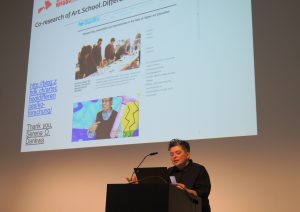




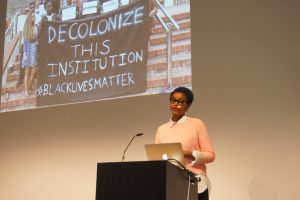









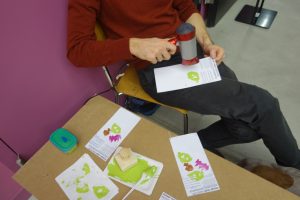











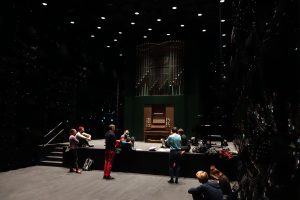



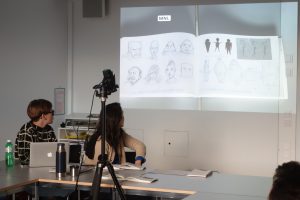






Copyright Art.School.Differences Şebnem Efe
***********************************
BECAUSE IT’S 2016! CHALLENGING INCLUSION AND EXCLUSION AT SWISS ART SCHOOLS
Venue: Toni Areal, Zürich on 11 & 12. November 2016
Times: FRI 14-21.15h; SAT 9-18.15h
Conference convenors: Sophie Vögele, Philippe Saner, Carmen Mörsch & Dora Borer; supported by Maja Renn
**********************************





